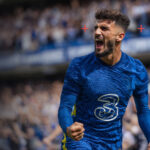Understanding the decision making process is a key element for any professional team trying to improve its outputs and, by extension, make more insightful decisions in the future.
Typically, decision making processes have fallen into two domains of thought: Complex, systematic decision processes wherein knowledge and goal orientation determine direction and reference checks gauge effectiveness, and ‘light bulb’ events where specific moments of inspiration determine the direction taken. These two processes are essentially opposites, but play equally essential roles in professional sports at various times.
For example, athletes often rely on real-time, intuitive decision making to play to their full potential. In order to make effective decisions, an understanding of what constitutes solid play/decision making is necessary. However, when multidisciplinary teams are working together, this process can become disjointed as decisions have an impact on the culture, clarity, and congruence of teams. As such, conflicting viewpoints can derail even the most direct intentions.
In order for decision processes to become transparent, all involved parties within a team must be clear on the criteria. The collection and analysis of performance data is one primary step towards this end. Without this strategic approach, teams risk losing the marginal gains that typically separate teams at the elite level.
Unfortunately, a number of poor decision making pitfalls are commonly associated with even the most congruent teams. In fact, congruence can often impede innovation, leading to poorer decision quality. Groupthink, which occurs when ineffective decisions are made in the name of homogeneity, is one such example (Janis, 1972).
Some extreme examples of groupthink include:
Typical causes of groupthink:
- Peer censorship & pressure
- Unquestioning practices
- Stereotyping
The sports equivalent of groupthink is resistance to changing tactics, especially during periods of poor performance. This can happen when dependency is encouraged as opposed to autonomy, or there is reluctance to integrate external expertise. The effects in sport may not be comparably destructive to the examples listed, but chances of sustained success can decrease at an expedited rate.
Professional Judgement and Decision Making (PJDM, Martindale and Collins 2007, 2012) is a process based on the premise of understanding expert thinking strategies to identify the most relevant sources of information used by experts to guide successful decisions. It requires analyzing team needs for improvement, establishing and prioritizing objectives, rationalizing methods selected, and implementing pathways to meet objectives. Similarly, rationalizing other possible options that were not chosen is equally important, as it clarifies that considerations made in the decision process. Ultimately, PJDM creates shared mental models, which encourage strategic, effective, and transparent decision making across an organization. Benefits include:
- Open and accepted disagreement
- Re-analyses of facts and decisions within the group
- Long term view i.e. consequences of decisions
- Perceived equitable rewards
Kitman Labs’ iP: Intelligence Platform offers implementation of this model in professional sports whereby team personnel can log, evaluate, and rationalise their decisions in one place. The objective of all of this is to encourage transparent, accountable decisions across an organization, and to facilitate communication and create opportunities to review and adapt strategies derived from all parties involved, from the athletes and coaches to team managers.
References
- Janis, I.L. (1972). Victims of groupthink: A psychological study of foreign policy decisions and fiascoes. Boston: Houghton Mifflin Company.
- Martindale, A., & Collins, D. (2012). A professional judgment and decision making case study: Reflection-in-action research. The Sport Psychologist, 26, 500-518.
- Martindale, A., & Collins, D. (2007). Enhancing the evaluation of effectiveness with professional judgment and decision making. Sport Psychologist, 21(4), 458-474.
- Martindale, A., & Collins, D. (2005). Professional judgment and decision making: The role of intention for impact. Sport Psychologist, 19(3), 303.
- Martindale, A., & Collins, D. (2010). But why does what works work? A response to Fifer, Henschen, Gould, and Ravizza, 2008. Sport Psychologist, 24(1), 113.




